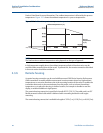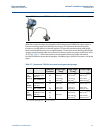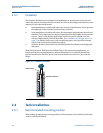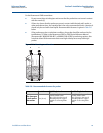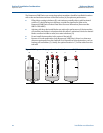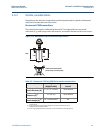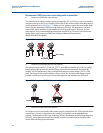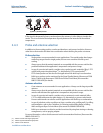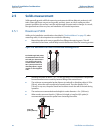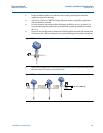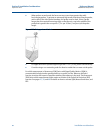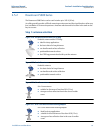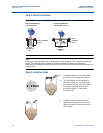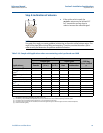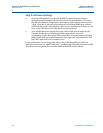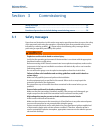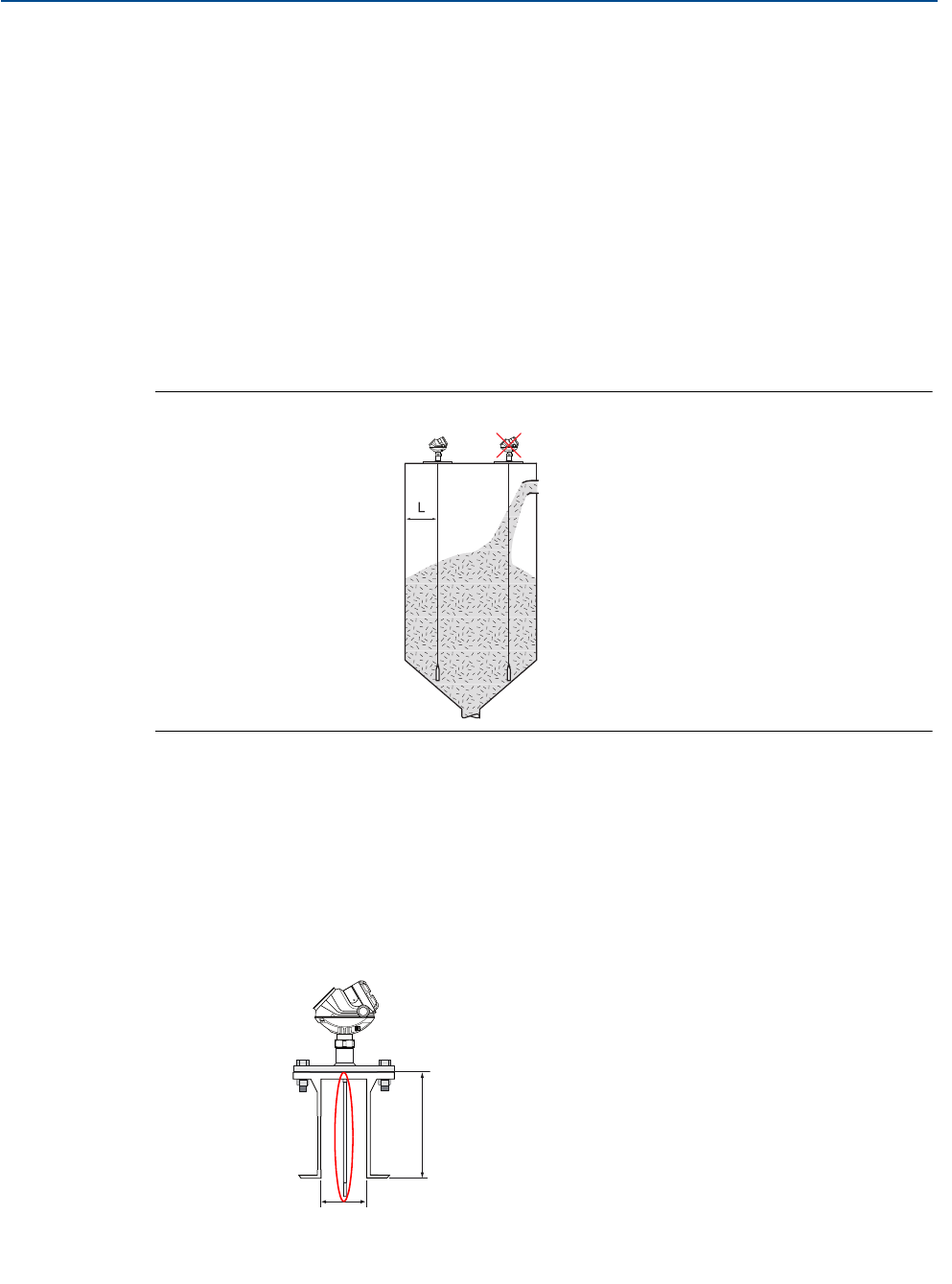
28
Reference Manual
00809-0700-4530, Rev AA
Section 2: Installation Considerations
September 2013
Installation considerations
2.5 Solids measurement
Solids generally provide a difficult measuring environment with low dielectric products in tall
tanks, where pull forces may act on the probe, and dust, steam, or risk of coating are often
present. In addition, the surface is not flat and the angle of repose tends to change. As a result,
the signal levels are often very low, and installation is of utmost importance.
2.5.1 Rosemount 5303
Adding to the installation considerations described in “Tank installations” on page 22, when
measuring solids, it is also important to consider the following:
Mount the probe as far away as possible from filling and emptying ports. This will
minimize load and wear, and will help to avoid disturbances from the incoming product
Figure 2-20. Rosemount 5303 solids recommended mounting position
Installing the probe at about
1
/3 to
1
/2 of the silo radius is recommended to compensate
for measurement errors caused by centered filling of the material cone.
The minimum recommended probe distance to tank wall or disturbing object is 20 in.
(50 cm), unless the wall is comprised of smooth metal. Then the distance is 4 in.
(10 cm). In any case, the probe should not be able to touch the wall of the tank during
operation.
The maximum recommended nozzle height is nozzle diameter + 4 in. (100 mm).
When nozzles are more than 4 in. (100 mm) in height, a Long Stud (LS option) is
recommended to prevent the probe from contacting the nozzle.
For flexible single lead probes,
the minimum clearance to the
tank wall (L) or obstruction is
4 in. (10 cm) in the case of
smooth metallic walls, and
20 in. (50 cm) in the case of
disturbing objects, rugged
metallic or concrete/plastic
walls.
Long stud
(9.8 in./250 mm)
Nozzle
height
Nozzle diameter



